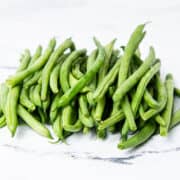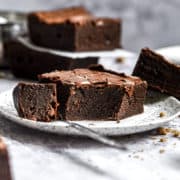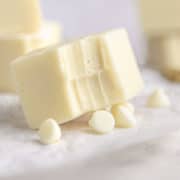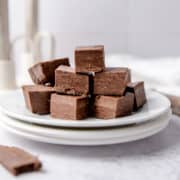Fresh green beans are a popular vegetable and they can be used to make various side dishes and other recipes. Find out how to store green beans, also known as string beans, wax beans, French beans, haricots verts, and snap beans, so you can extend their shelf life.
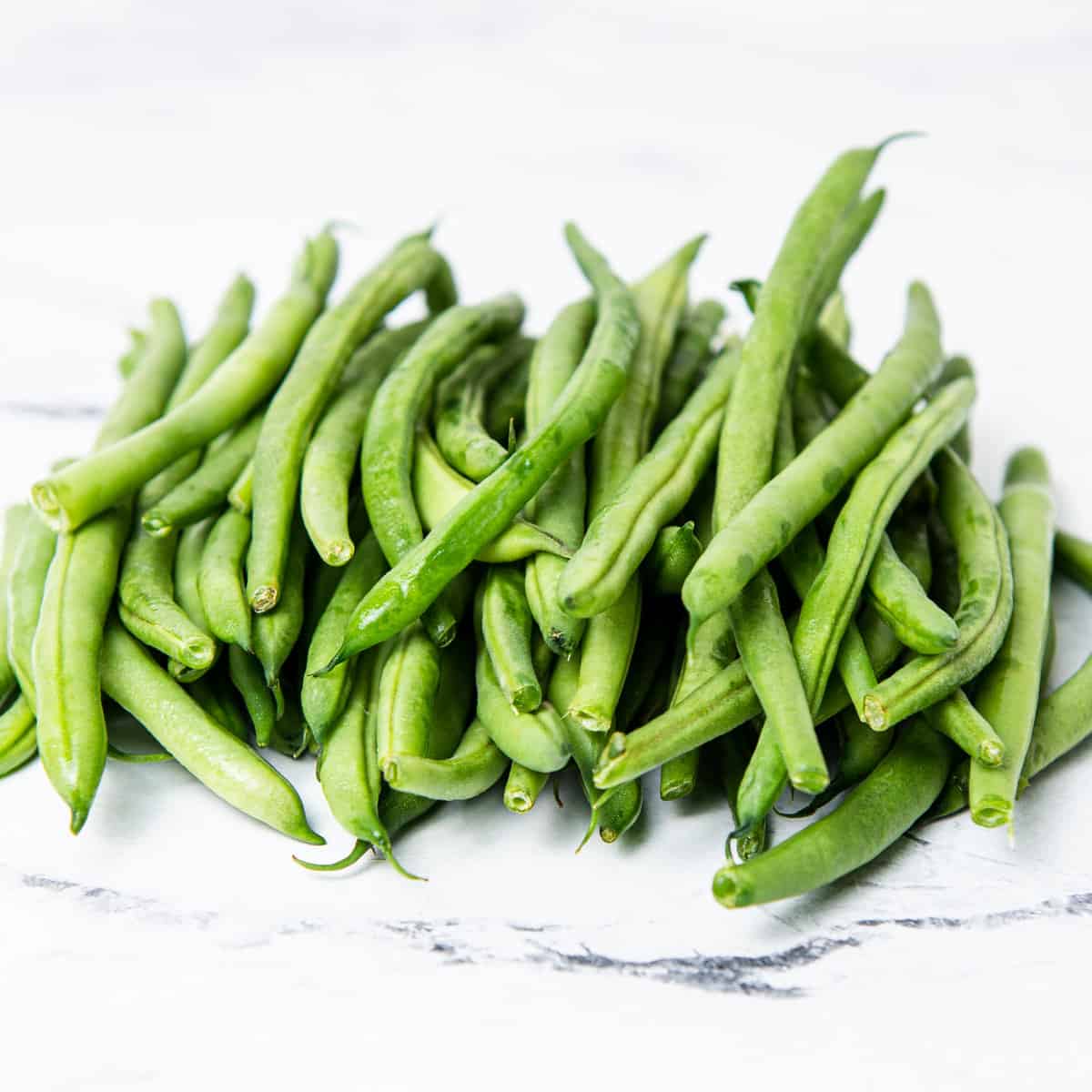
Jump to:
Beans make a great side dish because there are so many different ways to prepare them. They can be steamed, boiled, grilled, pan-fried, microwaved, or roasted. Wrap them in bacon, pan-fry them with butter and lemon juice, or roast them to perfection. Green beans pair nicely with pretty much any kind of protein from chicken to beef, fish, and seafood.
I love adding chopped green beans to egg recipes like omelets and frittatas. They're also delicious in casseroles, adding a splash of color as well as a mild flavor. If you love this vegetable as much as I do, you might want to grow your own green beans in the backyard or in a container.
What are Green Beans?
Green beans (Phaseolus Vulgaris) are a member of the legume family. They are green, long, and thin, and a warm weather crop, preferring a climate between 65°F and 80°F. Green beans are popular all over the world and are used in many recipes, both Western and Eastern. They're delicious and served in myriad ways at any time of year.
They are a great source of Vitamins A and C, and also contain Vitamins B6, E, and K, along with thiamine, niacin, calcium, magnesium, zinc, iron, and more. Although raw green beans are edible, they can cause bloating and stomachache in some people because of their high lectin content when raw.
Green beans have been around for thousands of years. Native to South and Central America, they've been grown and enjoyed for thousands of years in Peru and Mexico. Christopher Columbus introduced fresh beans to Mediterranean countries in 1492, and it was then cultivated in Turkey, Greece, and Italy in the 1600s.
There are more than 150 green bean varieties today and you can buy them fresh, frozen, or canned. Although green beans are usually green, there are some varieties that are yellow, red, or purple, although the beans inside the pod are nearly always green.
Fresh green beans are hands-down the best, as you would expect, followed by frozen and finally canned. The canned ones can be very salty though and rinsing them removes about 40% of the added salt. Canned beans can be mushy too which most people prefer to avoid.
One variety is pole beans, so named because they grow clinging to poles or trellis. All green beans used to be stringy and tough, hence the name string beans, although since farmers cross-bred them, they are now stringless beans or, more usually, just referred to as green beans, as there is no longer a tough string to remove before cooking.
How to Select the Best Quality Green Beans
Unless you're going for frozen or canned green beans, you'll want to know how to choose the freshest ones at the grocery store or farmer's market. Fresh green beans should be bright green and have a firm texture, not a limp one. They should be free from black or brown spots and other blemishes.
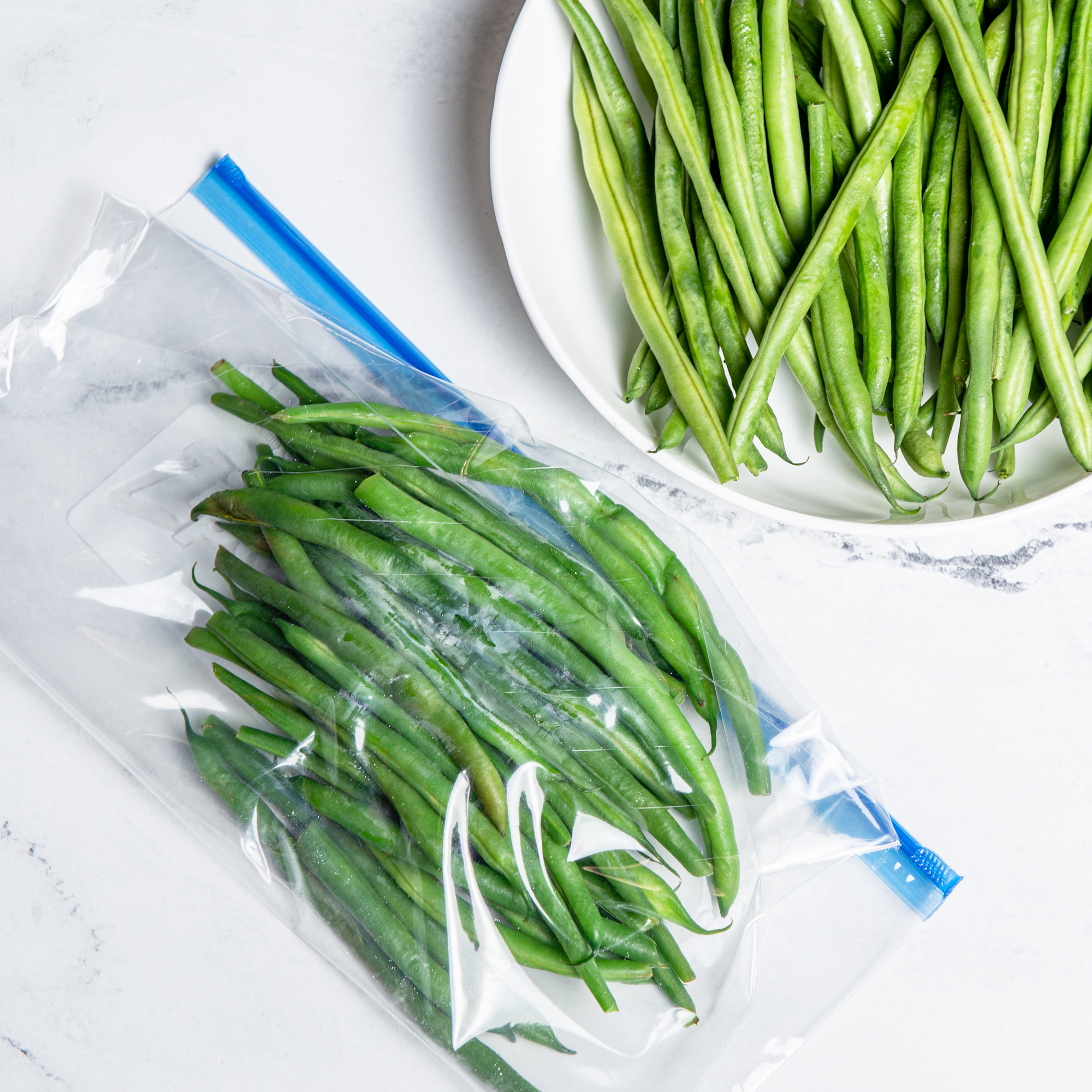
How to Store Green Beans
Now you know how to check whether green beans are fresh or not, you will want to know how to store them to keep them that way for as long as possible.
- Don't wash them until you're ready to use them, because excess moisture can speed up the rotting process.
- If they have any moisture on them, dry them off with a paper towel before storage.
- Keep green beans in a plastic bag in the fridge crisper drawer and use them within a week.
- It's best to squeeze out as much air as possible. Green beans don't need airflow.
- They prefer a temperature between 40°F and 45°F.
- If you prefer to freeze them, blanch them in boiling water for a few minutes before cooling them in a large bowl of cold water. Freeze in a single layer then put them in a Ziploc freezer bag or airtight container and use the frozen beans within 8 months for the best flavor.
- Cooked green beans should be stored in an airtight container in the refrigerator and used within 4 days.
When stored like this, you will find green beans to be incredibly versatile. There are so many recipes you can use them in. And they're a popular side dish for holidays like Thanksgiving and Christmas, making them a special occasion must-have.
How to Tell if Green Beans Are Bad
The best way to determine the freshness of your beans is to look at them. When they start to spoil, green beans begin to show brown spots. They become less firm and more bendy. They're still safe to eat at this point but if they're slimy or have mold on, you should discard them because that means they're no longer safe to consume.
Common Questions
You can do all kinds of wonderful things with green beans. Sauté them in a little olive oil, wrap them in bacon, or add them to casseroles. Green beans are great in soups, especially Italian minestrone, or you can make a stir fry. Other serving ideas include adding them to stir-fries or enjoying them chilled or at room temperature in salad niçoise for example, a simple French salad made with eggs, potatoes, green beans, lettuce, canned tuna, and olives. You can also get creative with a pressure canner and mason jars, pickling your green beans.
With their bright green color, green beans are always appetizing. But you might be wondering why they don't look quite so good after the cooking process. A great way to keep the color bright is to blanch in boiling water for a few minutes, add a splash of lemon juice or vinegar to the water, then plunge them into an ice bath to stop the blanching process. Overcooking them will also fade their greenness so al dente is the way to go. Although baking soda added to the water can also help them stay green, it can also make them mushy so it's best to avoid that method.

Interesting Facts
- Green bean plants have small white flowers as well as dark green, tear shape leaves that are fuzzy in texture and can cause itching.
- Green beans are a type of legume like lentils, peanuts, and peas, as they have pods with seeds inside and sprout from underground stems known as rhizomes.
- They grow on every continent apart from Antarctica, which is why green beans are well-loved all over the world.
- A few minutes of cooking time (perhaps 3 or 4) gives the best results because the beans are best a little bit al dente rather than too soft. I find that overcooking them can also dull their color and make them fall apart.
When you know how to store green beans to keep them fresh, you will want to try some new green bean recipes. These tasty little legumes can be served as a simple side dish or added to a wide variety of recipes.
